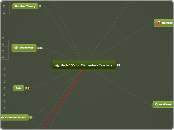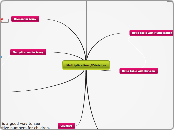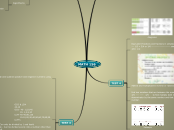Math 156 for Elementary Teachers
Ratios
Part-to-whole
Rational number
A number that can be written as the ratio of two integers. Often referred to as fractions, BUT not all fractions are RATIONAL fractions.
Least Common Multiple
LCM (a,b) = m
The smallest number that is a multiple of both a and b is m.
Greatest Common Factor
aka GCD
GCF (a,b) = n
The greatest common factor of both a and b is equal to n. The largest number that is a factor of both a and b is n.
Sets
Collection of objects
Compliment of a Set
Opposite.
Equivalent Sets
Same cardinal number
Equal Sets
Have identical elements
Empty Set
No elements
Proper Subset
A subset of another set and there is atleast one element of the other set that is not in the subset. (⊂)
Subset
Set of objects in which all of those objects are contained within another set. (⊆)
Universal Set
Collection of objects under consideration (U)
Sequences
Sequence- an ordered list
Recurrence Relationship Sequences
A sequence in which the current term is dependent on previous terms.
Geometric Sequences
Sequences of numbers with a common ratio.
Arithmetic Sequences
Sequences of numbers with a common difference.
Elements
Element- a memeber in the sequence
Number Theory
Characteristcs of a number.
Divisibility
If we writ "a divides b", there are 4 equivalent statements that are useful based on this statement.
1.) a is a factor of b
2.) b is a multiple of a
3.) a is a divisor of b
4.) b is divisible by a
Odd numbers
2n+1
Even numbers
2n
Prime/ Composite Numbers
Fundamental Theorem of Arithmetic
Every composite number can be written as the product of prime numbers in one and only one way.
Composite
Prime
Operations
Four Fact Families
a + b = c
b + a + c
c - a = b
c - b = a
Division (/)
Column Division
Scaffolding
Measurement (Repeated Subtraction)
Partition (Sharing)
Multiplication (x)
Cartesian Product Model
Area Model (Array Model)
Repeated Addition
Continuous
Discrete
Addition (+)
2 Basic models we consider for addition are:
Discrete, and
Continuous.
Identity Property
Associative Property
Commutative Property
Closure Property
Subtraction (-)
Missing- Addend Problems
Comparison Problems
"Take Away" Problems
Numberal Systems
Bases
Hindu- Arabic (what we use)
Base 10.
Roman Symbolic
Letters represent numbers. Positional.
Mayans/ Babylonians
Mayans had first symbol for "zero". Babylonians used Base 60
Egyptian System
Symbolic/ non-positional
Tally System
Problem Solving
Looking Back/ Reflecting on the Answer
Using/ Carrying out the Plan
Divising a Plan
Guess and check
Find a resource to assist
Use a formula if one ecists
Make an organized list/ table
Solve a simpler problem
Draw a model
Use tools (ruler, protractor, compass, etc)
Loofor a pattern
Work backwords
Act it out (using manipulatives)
Change your point of view
Identifying the Problem (Understanding the Problem)









